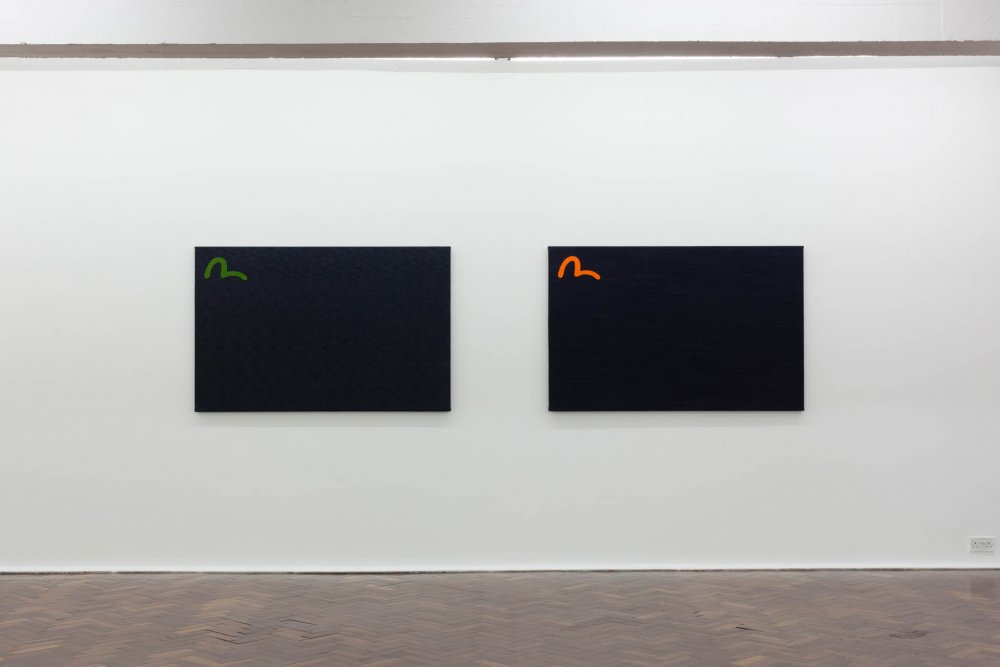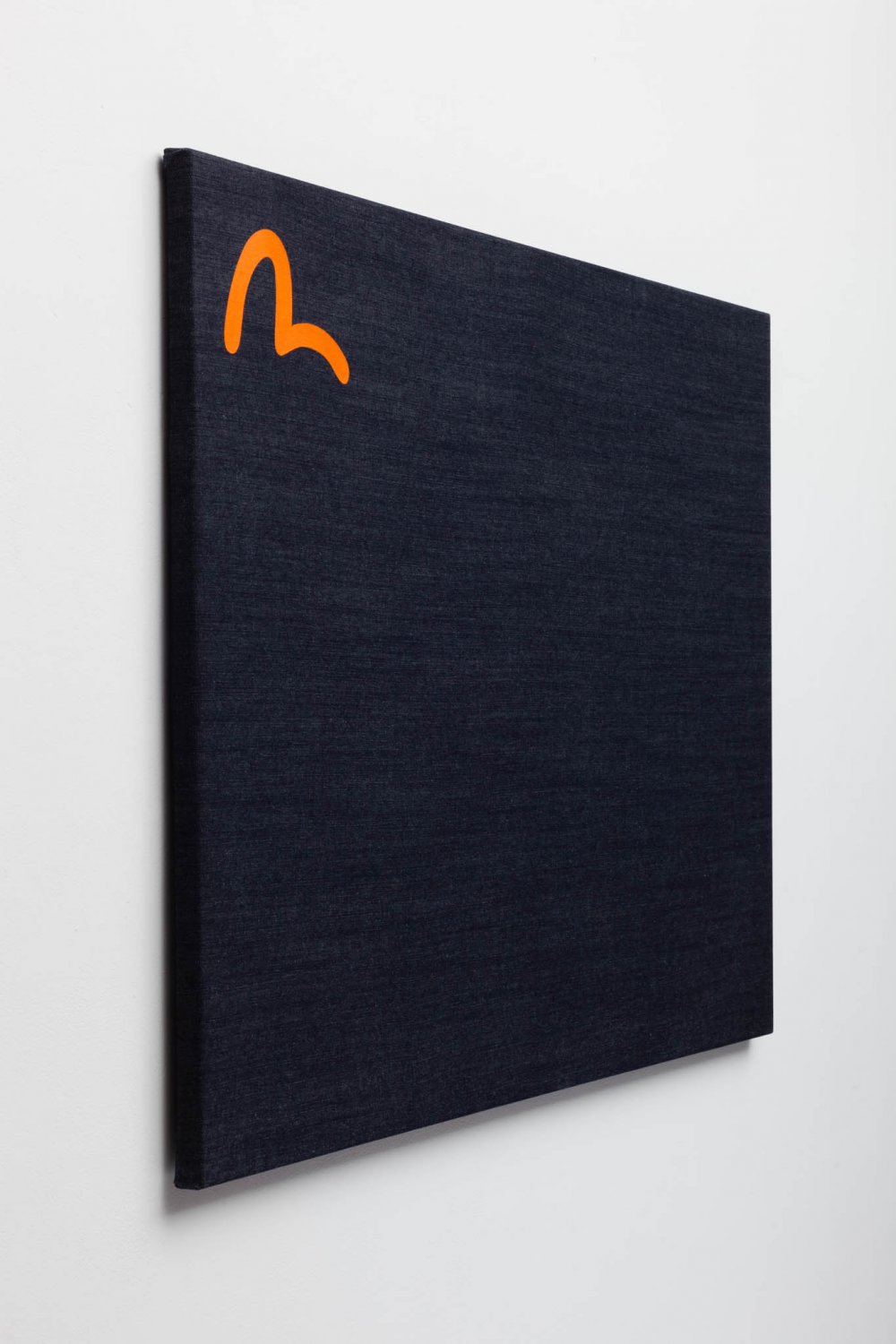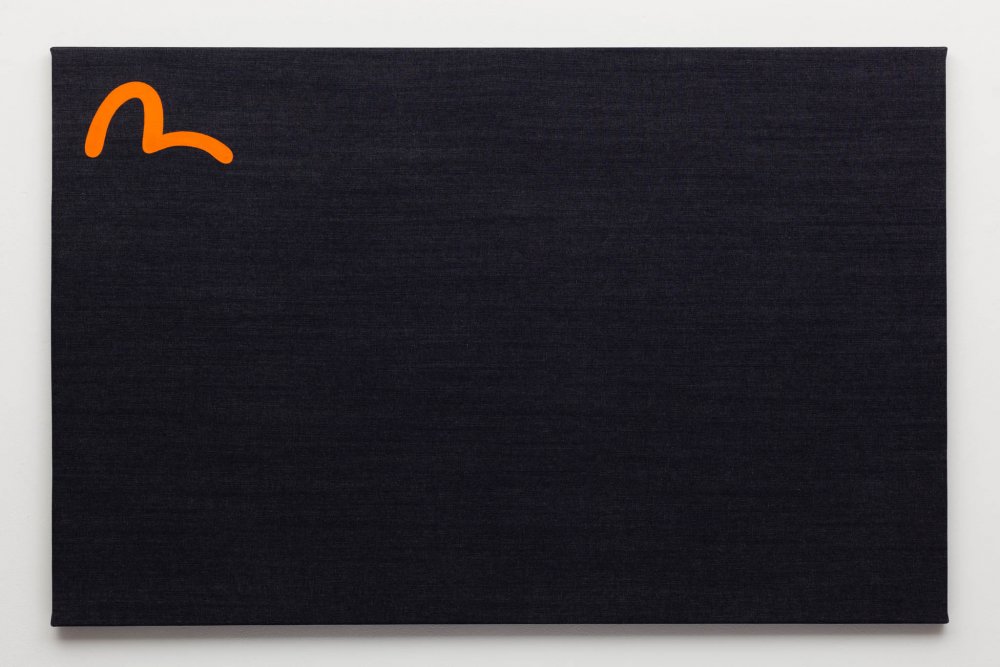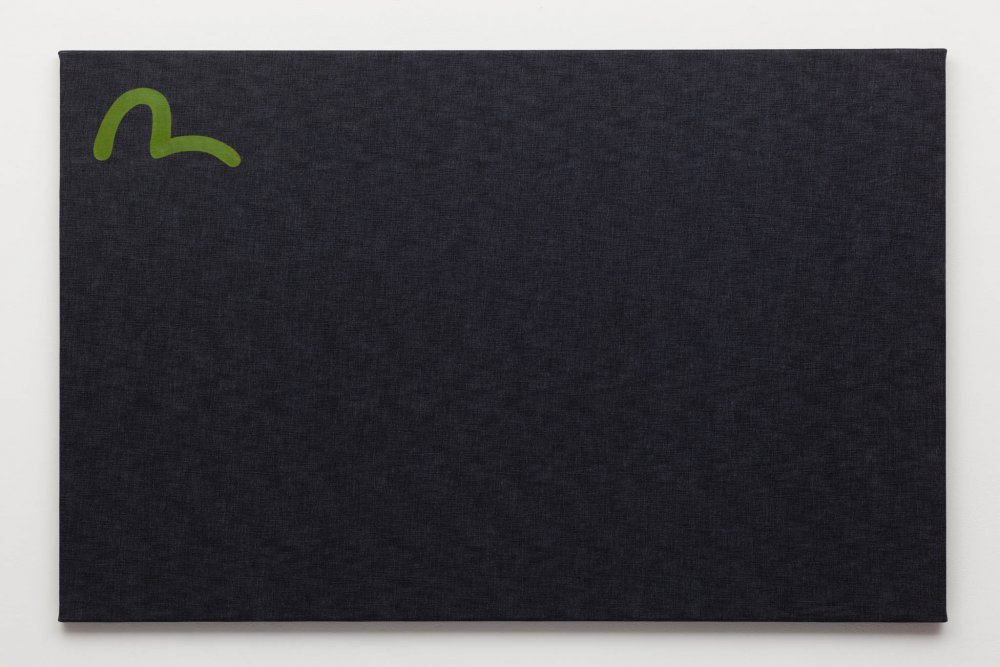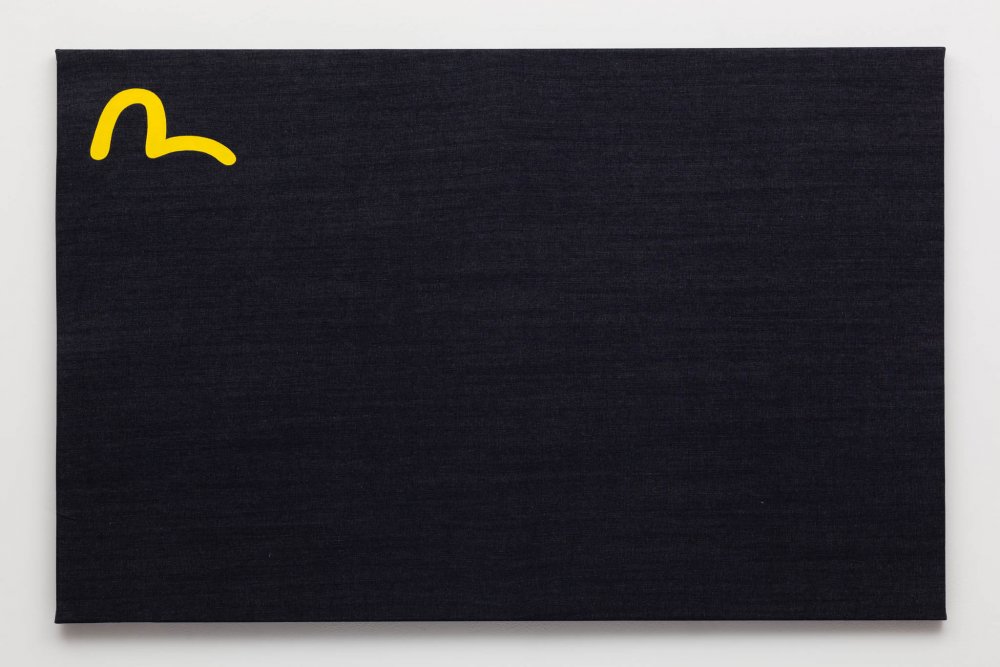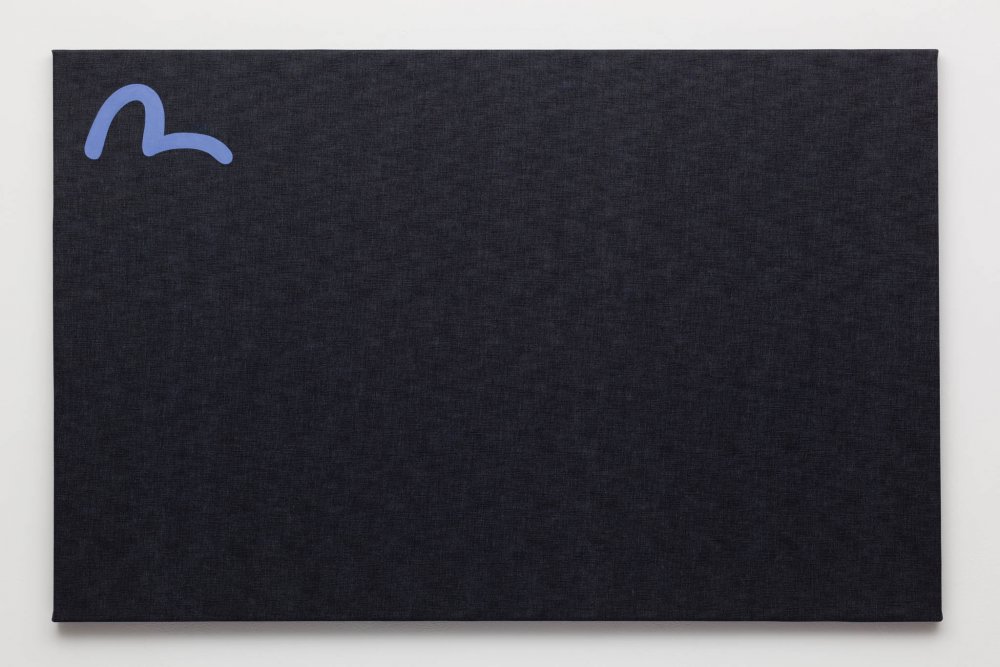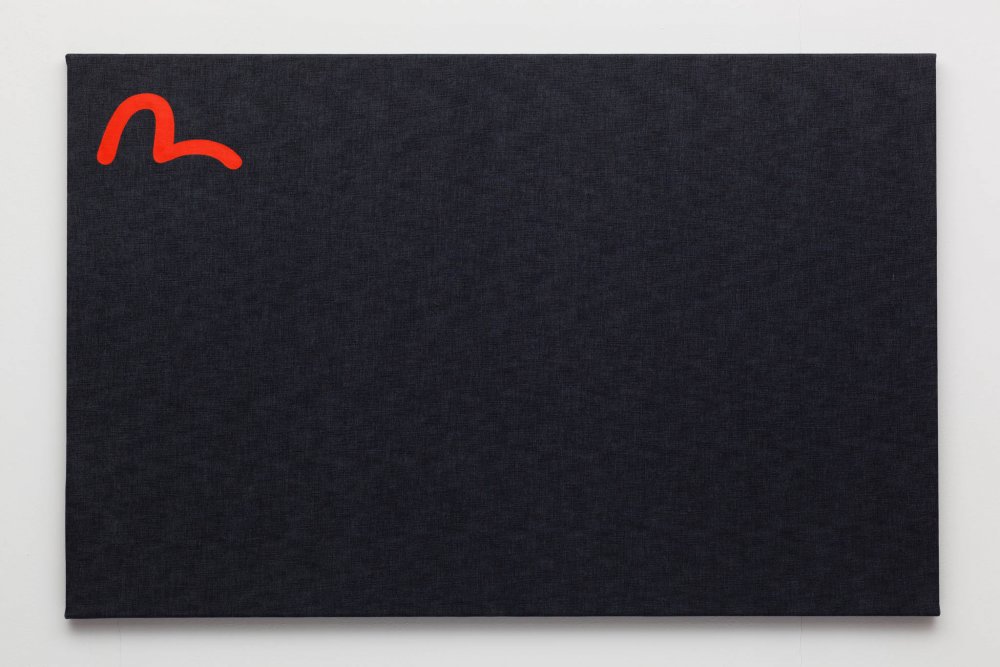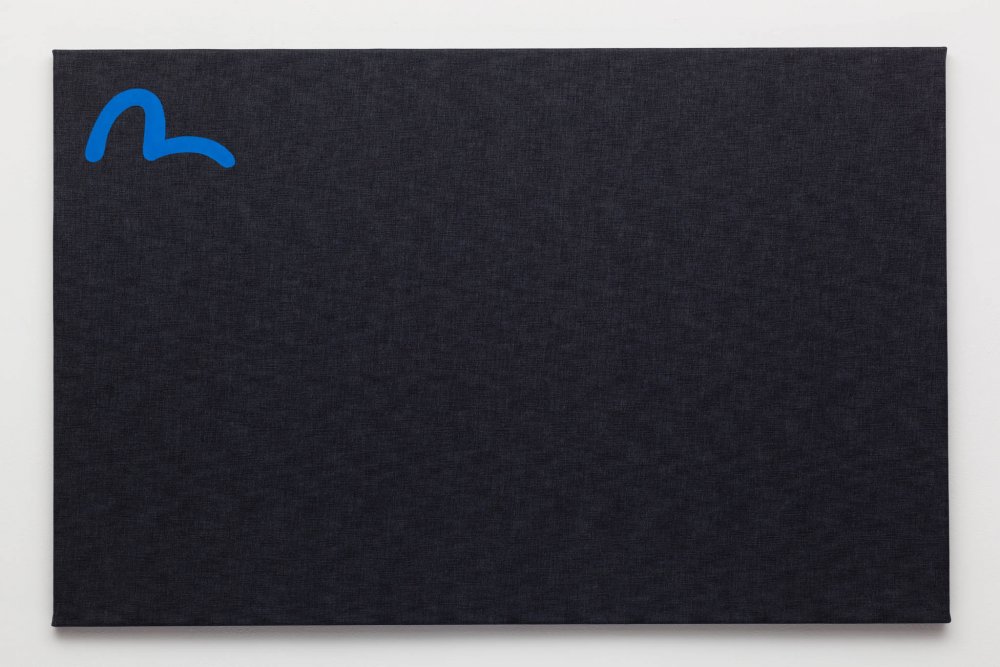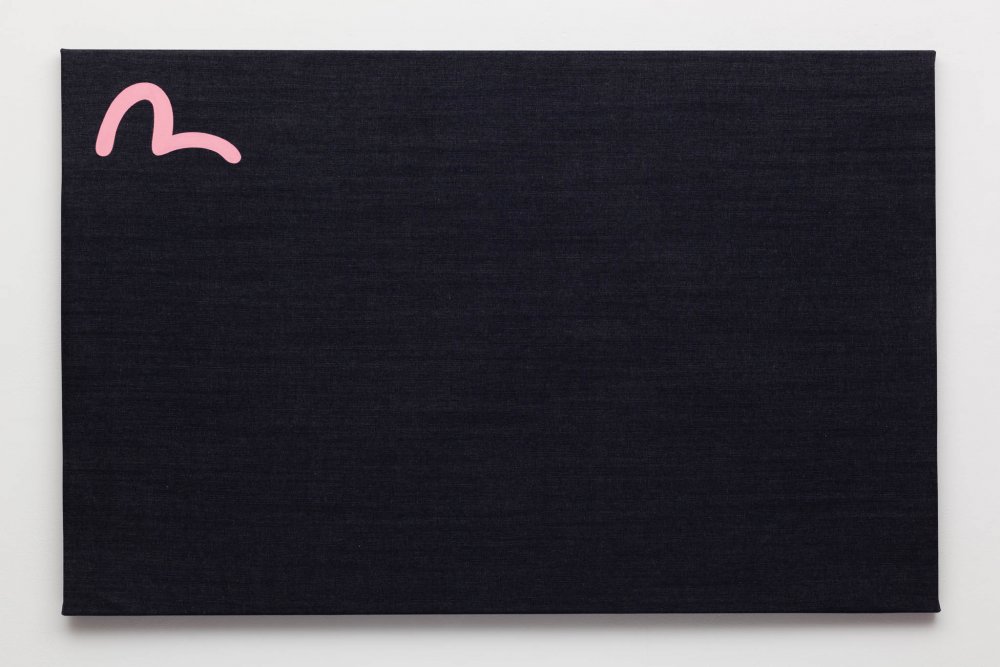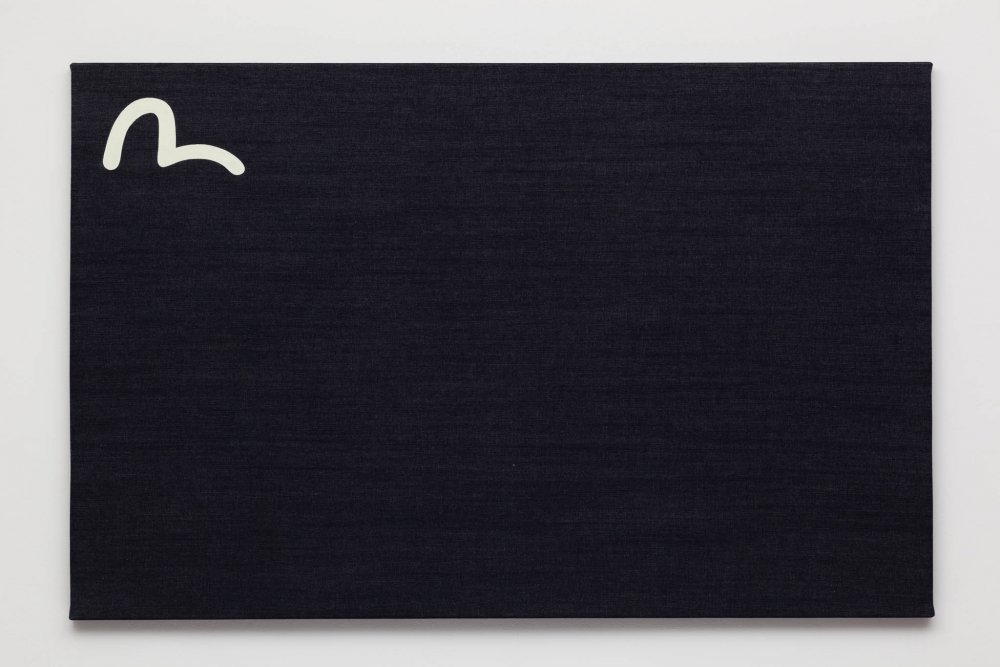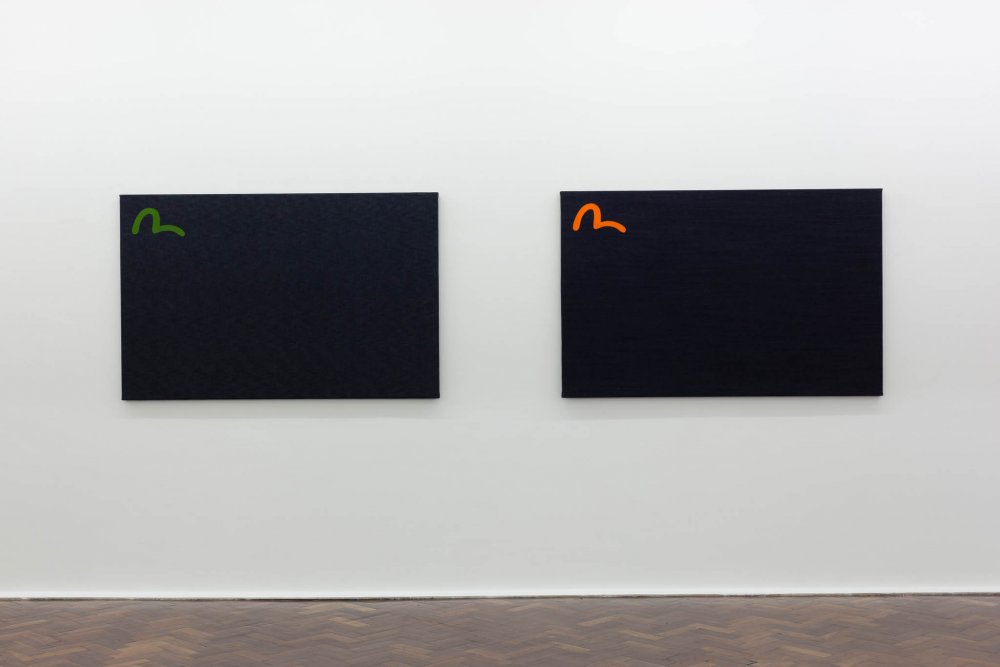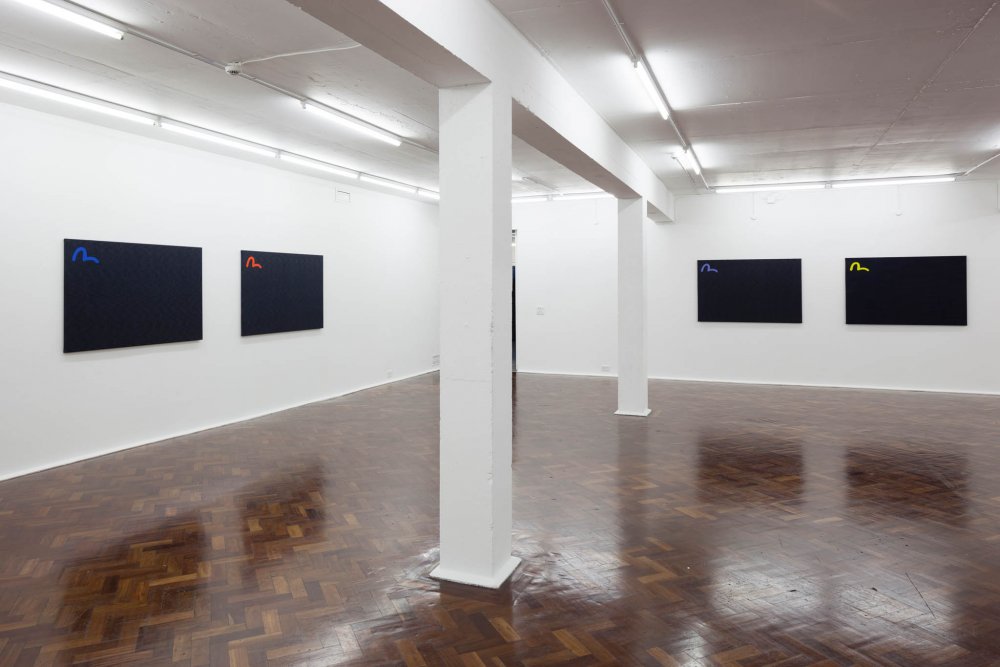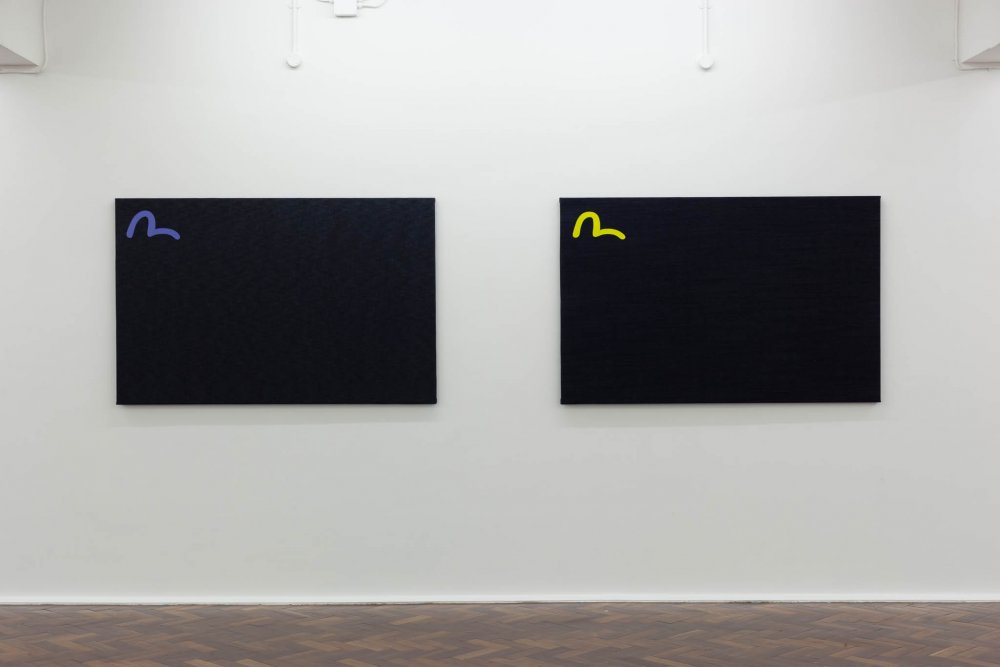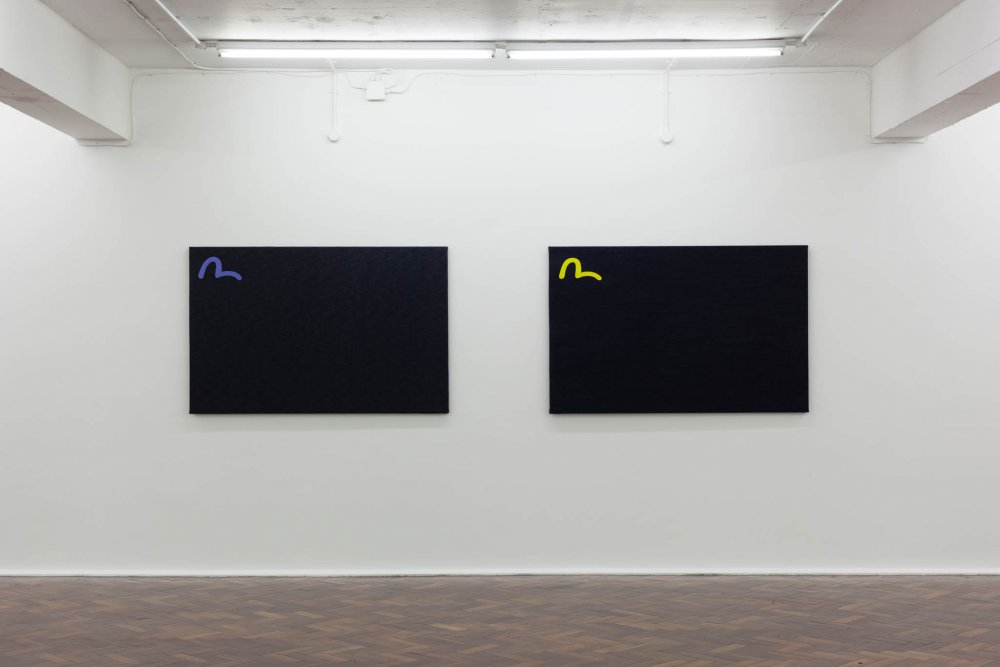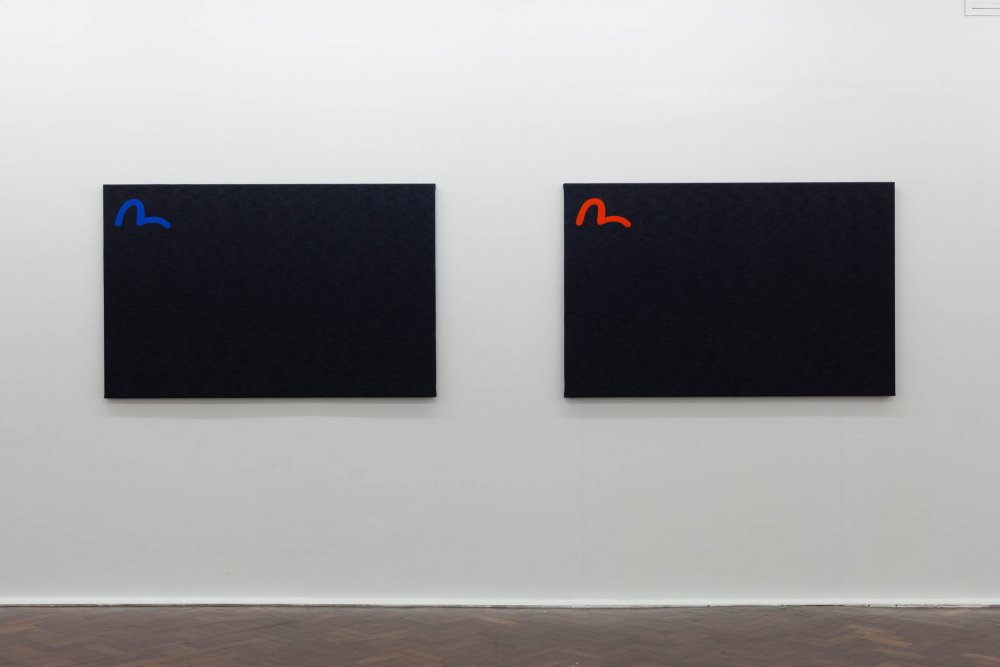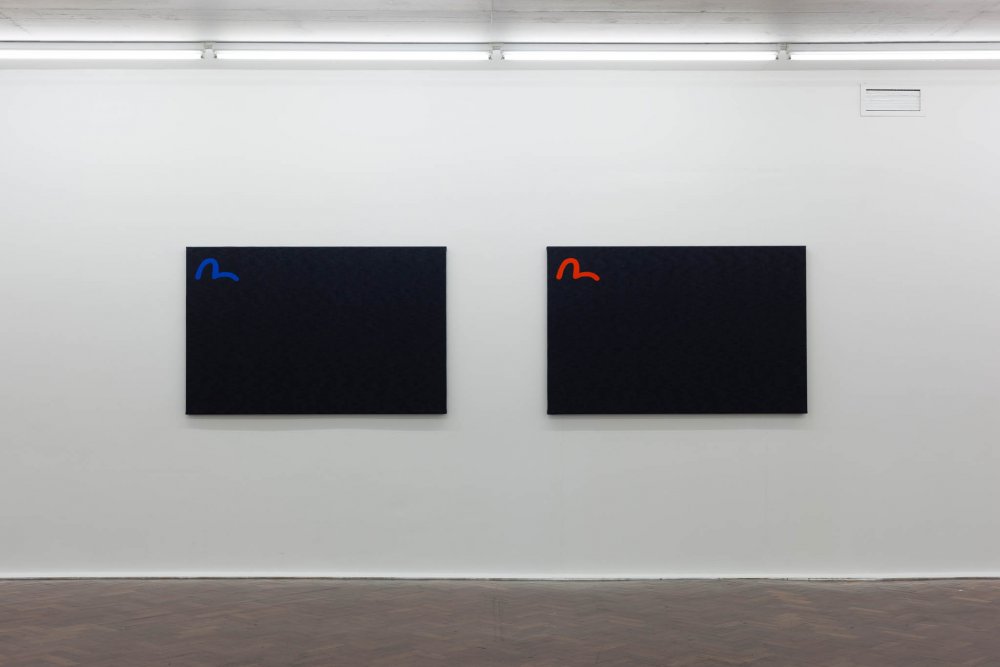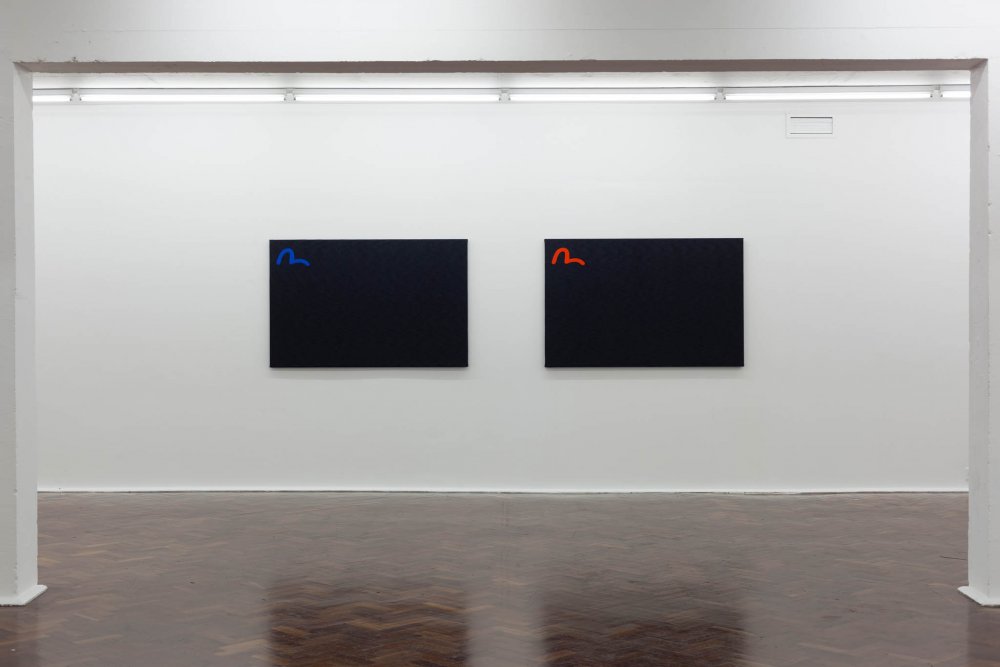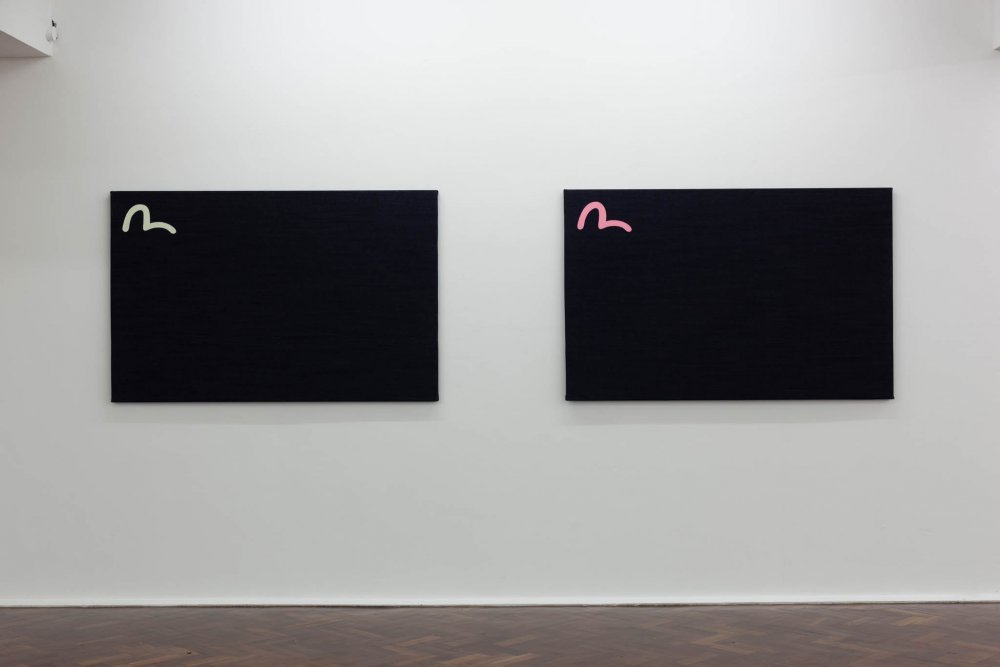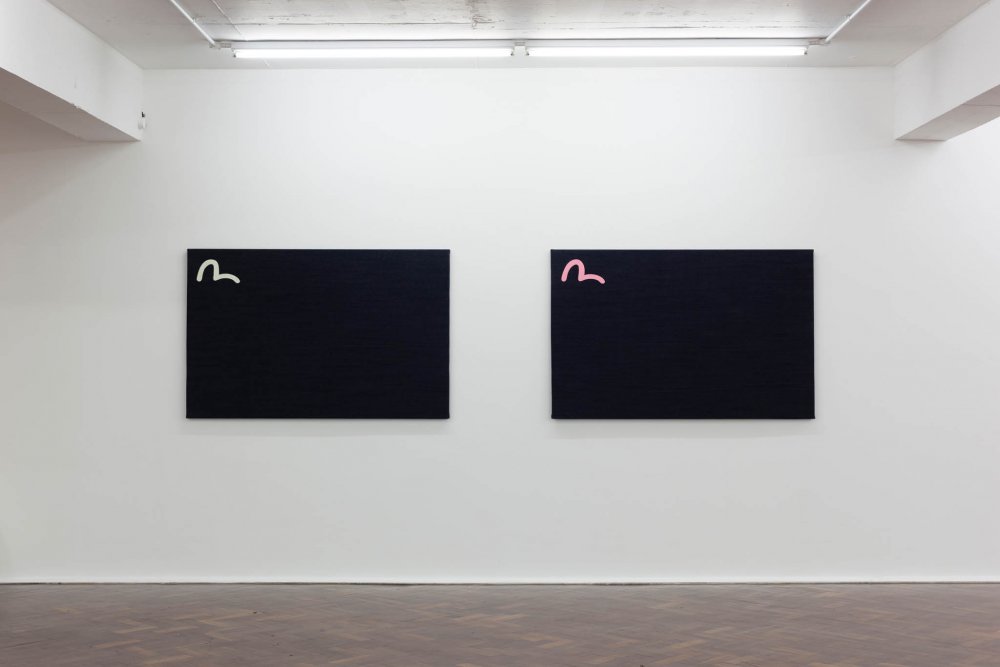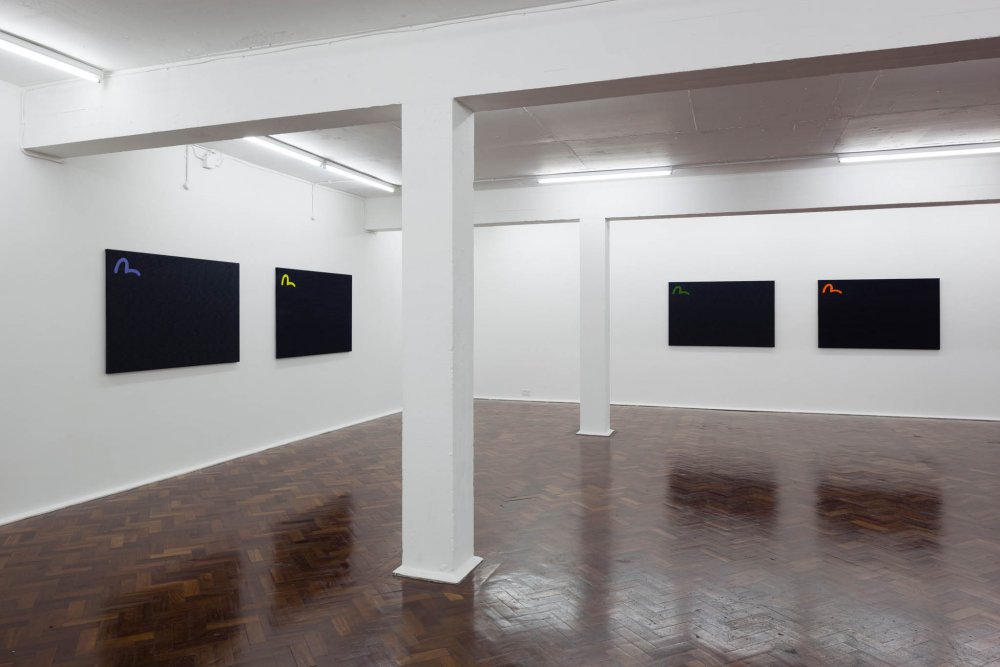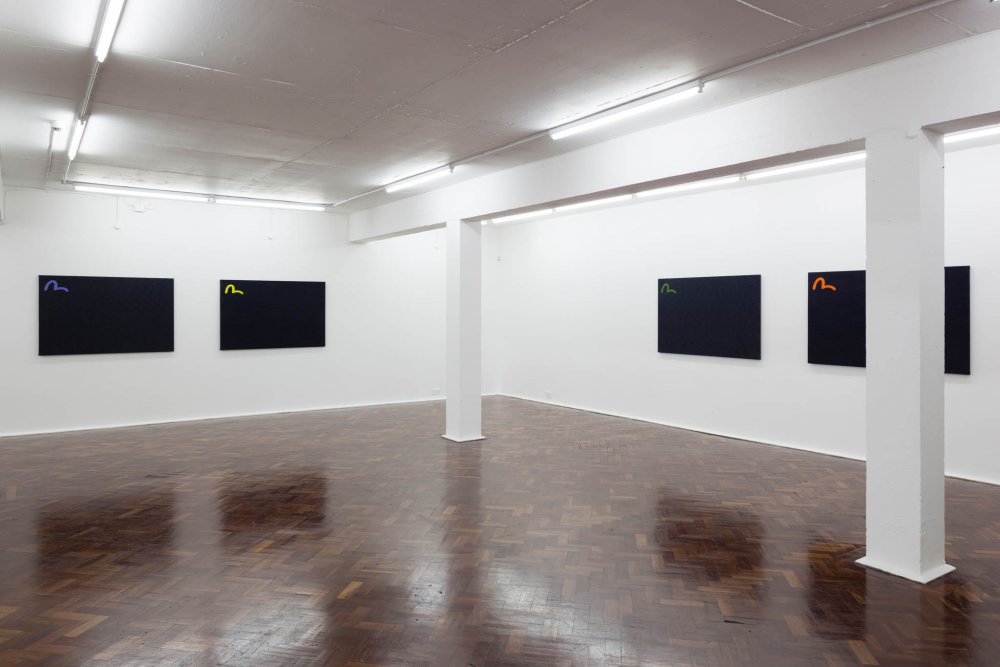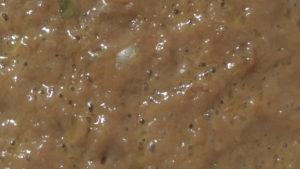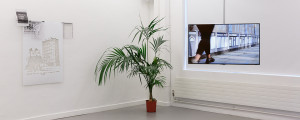Notoriously elusive Dean Blunt gives little away in the materials surrounding New Paintings, his latest exhibition for Hackney’s [ space ]. As viewers enter the room, two short wall-mounted phrases – “the good die young” and “ball in heaven” – are the only introduction to the wide open exhibition, and his deliberate withdrawal of context immediately feels overwhelming.
The honorific description of the death of young people sets up the idea that this is going to be a show dealing in similar themes Blunt has touched on many times before, in both his music and visual art: that of gangs and crime, or rather, how those things are glossed over or even abetted by our superficial societal obsessions. Just last week he shared ‘TRIDENT PART 2’, a spoken word track about violent events in Hackney and the police’s response. He’s often critiqued popular culture’s attachment of glamour to untimely death, the morphing of it into yet another distracting commodity in a world that’s full of them.
Standing out of the press information that circulated before the opening of New Paintings on October 3, “the good die young” seemed like a brutally clear-cut indication of what to expect, conjuring the idea that this might be a collection overshadowed by violence. Bodies have featured prominently in Blunt’s work before, and black bodies in particular: he explored the sexual objectification of the young men in his uncomfortably slowed-down take on D’Angelo’s ‘How Does It Feel’ video and gangs and gentrification in his Brixton 28s exhibit. The bodies in Blunt’s work are there to step over or to accept drinks from, dehumanised by marketing or by literally being made out of plastic.
Stepping into [space] this time, though, the emphasis is on the vast emptiness, as there’s not a body in sight. Eight near-identical and simply detailed ‘paintings’ hang, two on each wall, the room oddly symmetrical and serene. It lacks any of the physicality or immediacy you might expect from a show prefaced only by an angrily tongue-in-cheek line about the glory of youthful death; a line that projects wartime notions of “honour,” but resonates more today with young people caught up in gang violence and police brutality.
![Dean Blunt, New Paintings (2014) @ [ space ]. Courtesy the gallery.](https://d23pzp3qb0c2ie.cloudfront.net/wp-content/uploads/2014/10/Dean-Blunt-New-Paintings-2014---space-.-Courtesy-the-gallery..jpg)
The paintings deal not with the bodily truth underpinning the statement “the good die young,” but the cultural deflection of it. Instead of canvas, the frames are stretched with denim: the “painting” element of the show consisting of identical logos emblazoned on the top left-hand corner each fabric base. They seem to say, ‘don’t think about homicide statistics: check out the luxury texture of these selvedge jeans’. The emblem is the Evisu jeans brand, everything engineered to project an upmarket ideal, including the clean boutique feel of the cavernous space that dominates the room and that feels full of ugly truths unsaid. It’s reminiscent of the cover of Greg Tate’s essay collection, Everything But The Burden: What White People Are Taking From Black Culture – which shows a pair of low-slung jeans, and featured prominently in Blunt’s Brixton 28s – in that it once again foregrounds the garment as a piece of commercially packaged cultural identity.
In place of a real conversation about life and death, denim becomes a stand-in for skin, fashionably glossing over the topic. The emphasis in the initially functional-seeming title now falls on the ‘New’; as long as there’s something new to be had, something material to be gained, who cares about anything else? The mind goes back to the hand-based images on the press materials, such as the National Lottery’s ‘finger’s crossed!’ symbol – hands implying action and power, and yet being used to sell a capitalist dream for corporate interests; of free wealth to society’s hardest done-by. “Ball in heaven,” of course, because monetary satisfaction is the ultimate answer to all of earth’s horrors.

What’s the difference between blue and Osaka Blue? One’s a colour recognised universally from preschool up, the other is an invention by Calvin Klein to sell jeans. Blunt names one of his paintings “Untitled (blue)” and another “Untitled (Osaka Blue)” in a nod to this commodification of colour. In the stark presentation of the gallery, colour is slight and presented in twos: pink and white go together (because they’re feminine?), blue and red go together (the UK flag, Bloods vs Crips?), “Osaka Blue” and yellow. The pairings feel weighted, perhaps because they’re the only representation of variety or choice in the room: your agency in this jeans-wearing world is pared down to “what colour logo would you like on your uniform?”, as everything surrounding the option is starkly empty.
Violence doesn’t enter this space, but rather a suffocating awareness – despite being in a huge, open gallery – of the limitation of the options presented to particular parts of society. Perhaps to young black men, specifically. The message of the eternal “ball” tells them that their bodies aren’t as important as what they’re clothed in. Save up, take a gamble, keep your fingers crossed: because blood will wash out, but your design brand jeans are forever. **
Exhibition photos, top-right.
